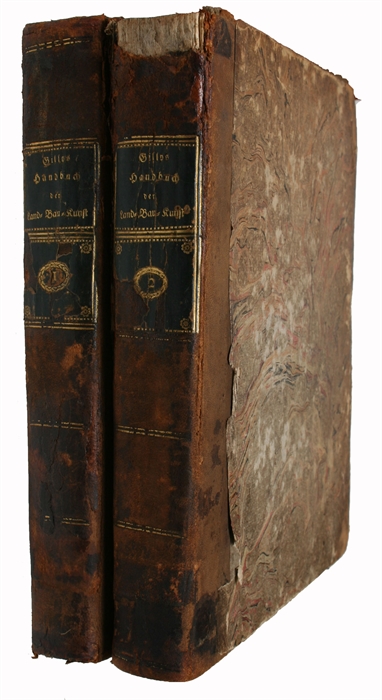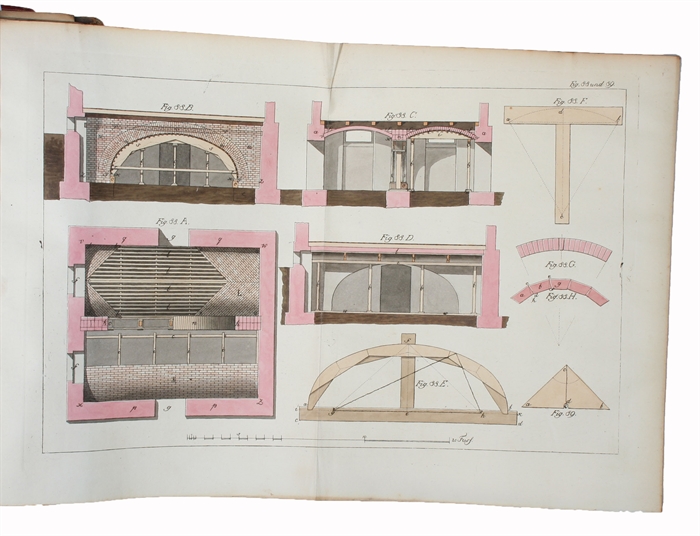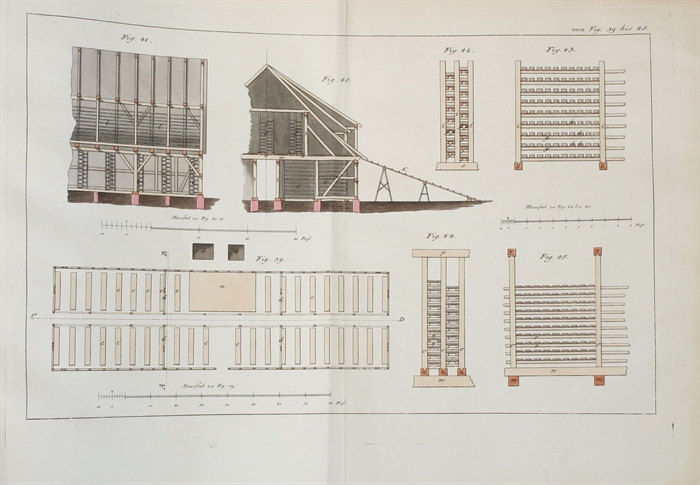SEMINAL WORK ON ARCHITECTURE.
GILLY, D. [DAVID].
Handbuch der Land=Bau=Kunst,vorzüiglich in Rücksicht auf die Construction der Wohn=und Wirtschafts=Gebäude für angehende Cameral=Baumeister und Oeconomen. Erster-Zweyter Theil. 2 Bde. (1.Theil in Neue Auflage).
Berlin, Verdrucht auf Rosten des Forfatters, 1798. 4to. Bound in 2 contemporary half calf. Spine with gilt leather title-label. Wear to extrimities, especially to spine: Loss of top 2 cm of spine and upper half of back hinges loose on volume 2. With library stamps to title page. Internally with occasional brownspotting, all the plates are, however, very nice and clean. (6), 296 pp + 24 hand coloured engraved plates; (1), VIII, 325, (4) + 23 hand coloured engraved plates.
Second printing of German architect David Gilly's seminal and famous work on country and rural architecture. The present work is one of the most successful examples of architecture integrating urban and regional planning and architecture and is probably the most important contribution to the development of Prussian Classicism. Gilly had extensive technical knowledge particularly of wooden roof structures.
"One of the trendsetters within the late eighteenth- and early nineteenth-century electorate was David Gilly (1748-1808), a second generation Huguenot whose family had come from Provence. He established the theory and practice of rual architecture in Brandenburg-Prussia; functionality and utility were paradigms by which he desgined buildings. Through his son (1772-1800), Gilly influenced the famous romantic-classicist Klarl Friedrich Schinkel and his school." (Finney, Seeing Seeing beyond the word: visual arts and the Calvinist tradition, p. 272).
David Gilly built the two castles Paretz (1796) and Freienwalde (1798) for the king of Prussia.
Order-nr.: 44105




